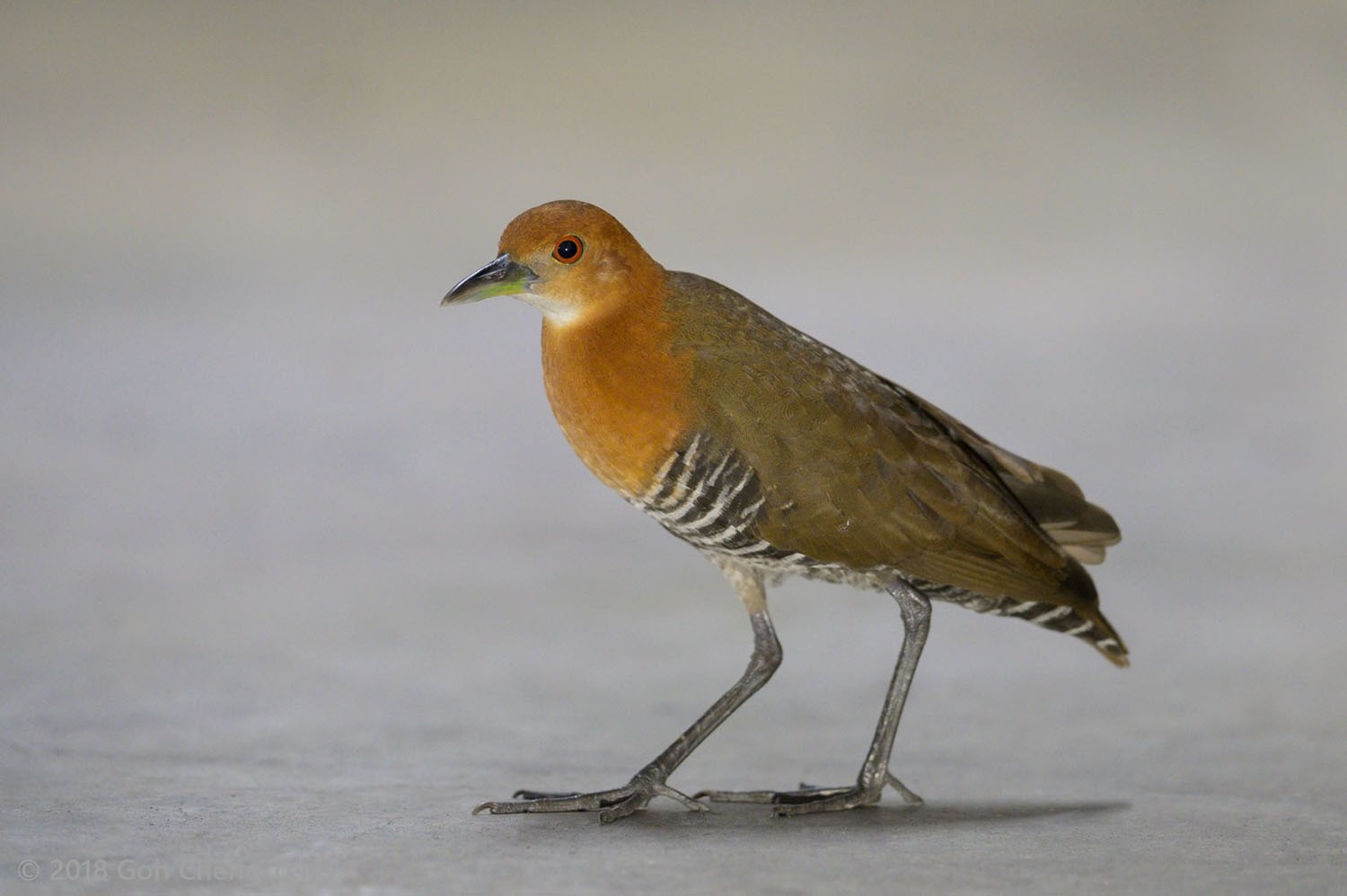Scientific Name: Rallina eurizonoides
Malay Name: Sintar-Merah Kaki Kelabu
Chinese Name: 白喉斑秧鸡
Range: Found from Pakistan, India, Southern China to Japan and also in the Philippines. Some populations winter to mainland Southeast Asia, Sumatra and Java.
Taxonomy: Polytypic. Subspecies are: amauroptera, telmatophila, sepiaria, alvarezi, formosana, eurizonoides, minahasa.
Local Subspecies: telmatophila
Size: 26-28 cm
Identification: Resembles Red-legged Crake but is larger and considerably larger-billed, has duller brown upperparts (except head and neck), more rufous-chestnut head, neck and breast, whitish throat that contrasts sharply with head-sides and dark slaty-grey legs. Juvenile resembles adult but has paler brown upperparts, head, neck and breast.
Similar looking species: Red-legged Crake
Habitat: Streams and wet areas in forest and also freshwater wetlands and gardens on passage.
Behaviour/Ecology: Often calls at night.
Local Status: Very rare migrant
Conservation Status: Least Concern (BirdLife International 2020)
Featured reports: Dec 2022
Migrant bar chart (see more bar charts):
Conservation Status: IUCN Red List Page
Sound Recordings: xeno-canto Link
Wikipedia Entry: Wikipedia Link
eBird Species page: eBird (Slaty-legged Crake)
References:
BirdLife International. (2020). Rallina eurizonoides. The IUCN Red List of Threatened Species 2020. https://dx.doi.org/10.2305/IUCN.UK.2020-3.RLTS.T22692317A181757127.en. Accessed on 1 January 2023
Robson, C. (2014). Field guide to the birds of South-East Asia (Second Edition). Bloomsbury Publishing, London.
RECOMMENDED CITATION
Bird Society of Singapore. (n.d.). Slaty-legged Crake. Retrieved on April 30, 2024 from https://singaporebirds.com/species/slaty-legged-crake.




